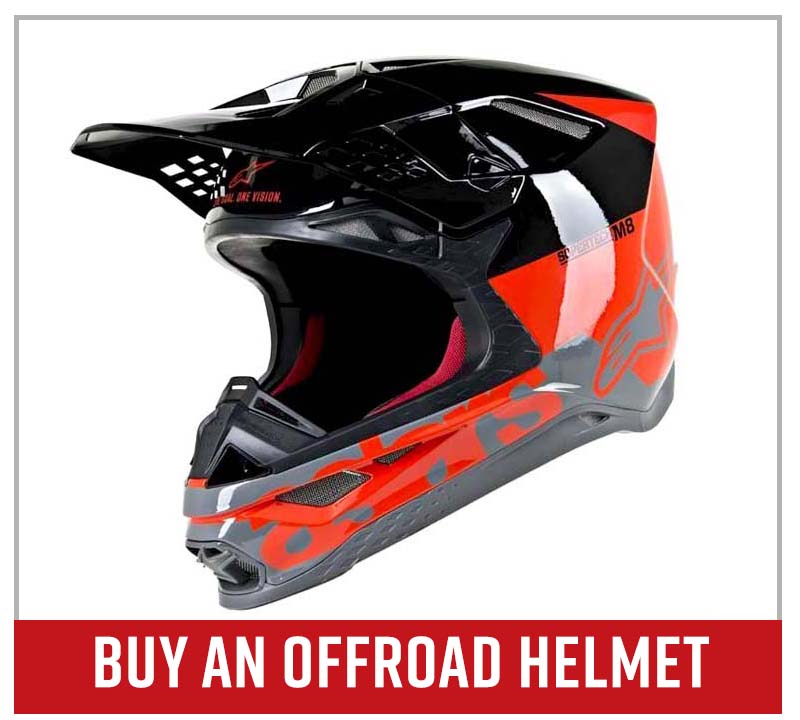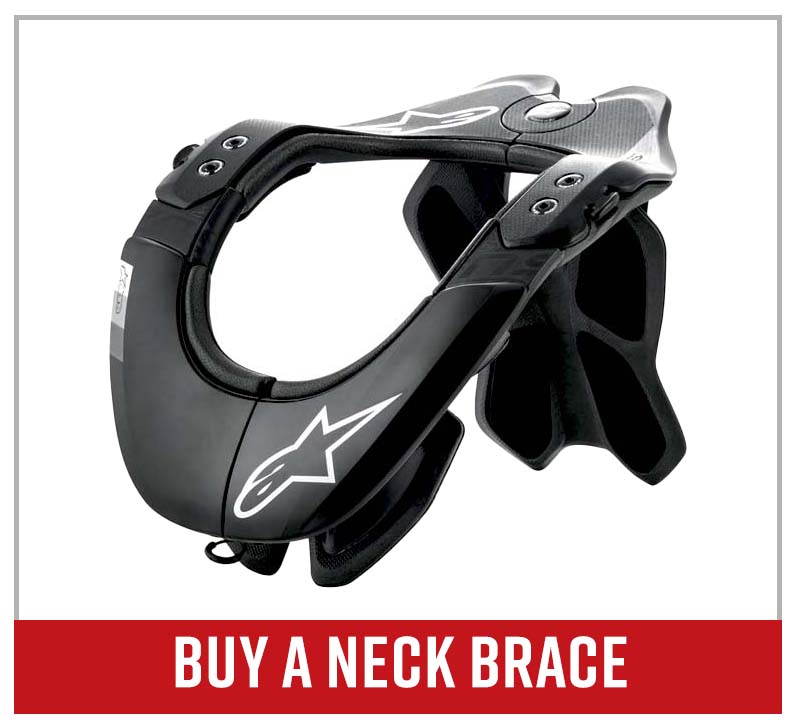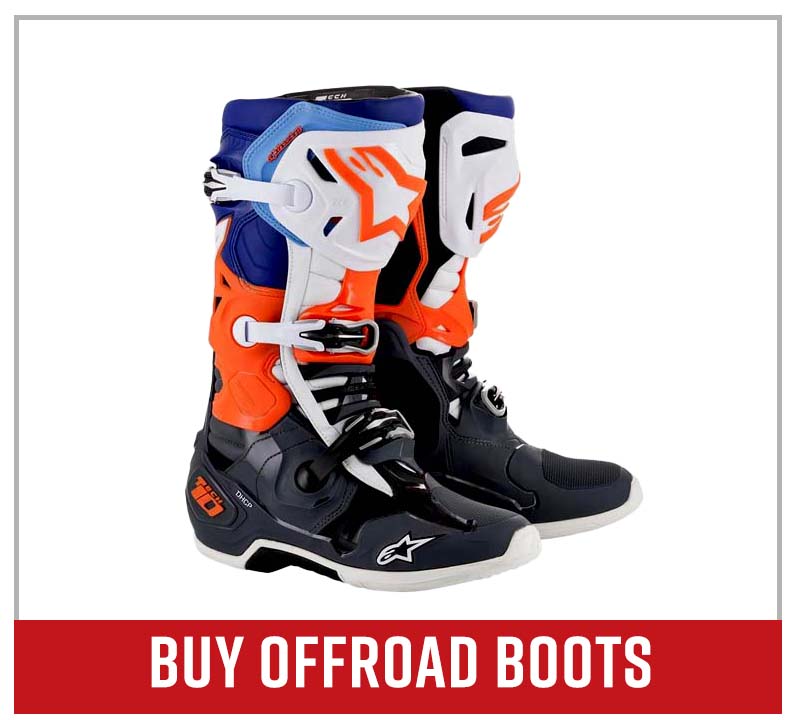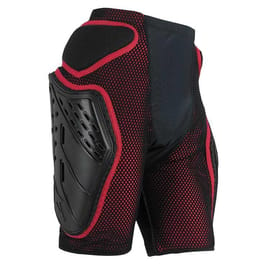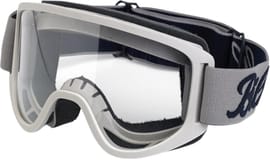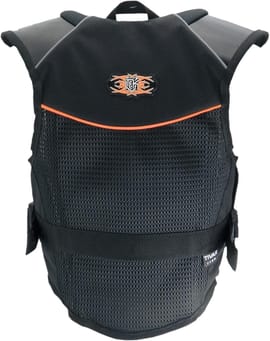Common ATV Injuries & How to Avoid Them
For all the fun and adventure ATVs offer, the fact remains that riding one can still be dangerous, no matter what your level of offroad riding expertise is. So when it comes to riding four-wheelers, it's good to know what kinds of injuries you may face and how to prevent them.

ATV Riding Injuries
Failing to ride within your limits and without the proper precautions can lead to serious injuries or even fatalities. When riding an ATV, the most vulnerable parts of the body to get injured are the extremities, namely your head, arms, legs, hands and feet.
Head Injuries
At the most serious level, head injuries can result in severe brain trauma, which causes a multitude of cognitive and sensory problems. Other serious head injuries include major and minor concussions that bring with them post-traumatic complications, and additional risks of further concussions. Facial injuries are also common among ATV riders, including eye injuries and lacerations caused by branches, stones, grit and dirt.
Neck Injuries
Any time the neck is forcefully jerked back or forth, it's prone to whiplash. Riding an ATV in rough terrain puts the rider at risk of whiplash, and any collisions or accidents dramatically increase those risks. In the event of flipping or rolling an ATV, there's the very real possibility of fracturing the neck and damaging the spinal column, which can result in total paralysis or death.
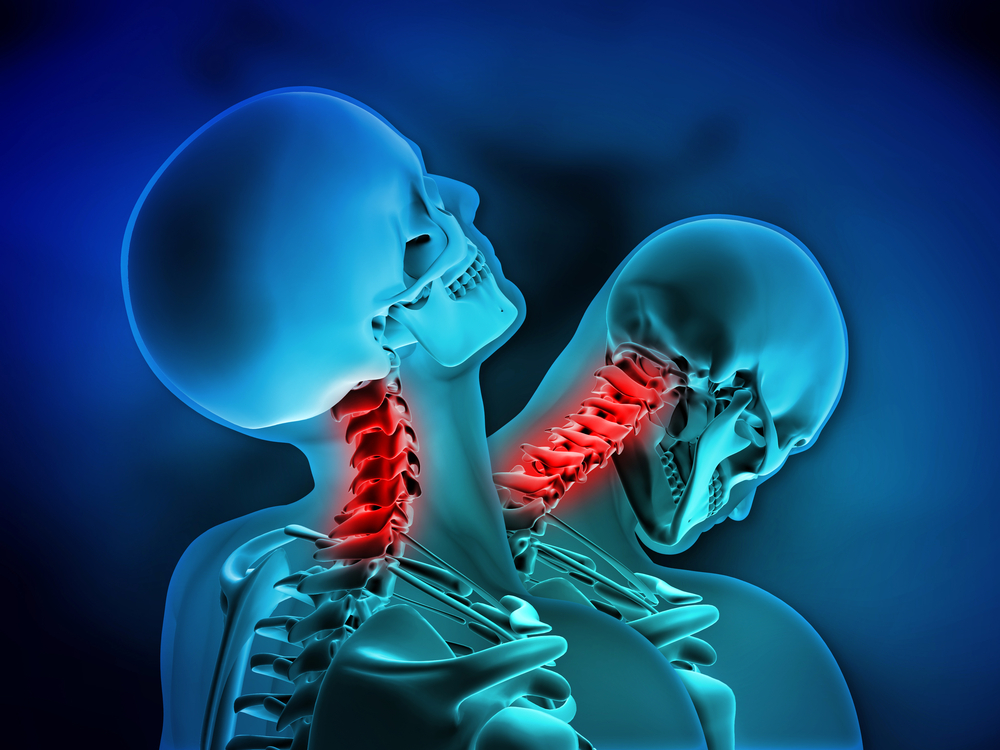
Arm and Leg Injuries
Your arms and legs are easily injured when you're thrown off an ATV, or when it tips over on you. Injuries that may result from getting thrown off a quad include broken and fractured bones, dislocated joints, torn ligaments, ripped tendons, etc. Ankles and wrists are particularly susceptible to sprains and fractures, while knees and elbows are usually the first parts of the body to hit the ground and get injured.
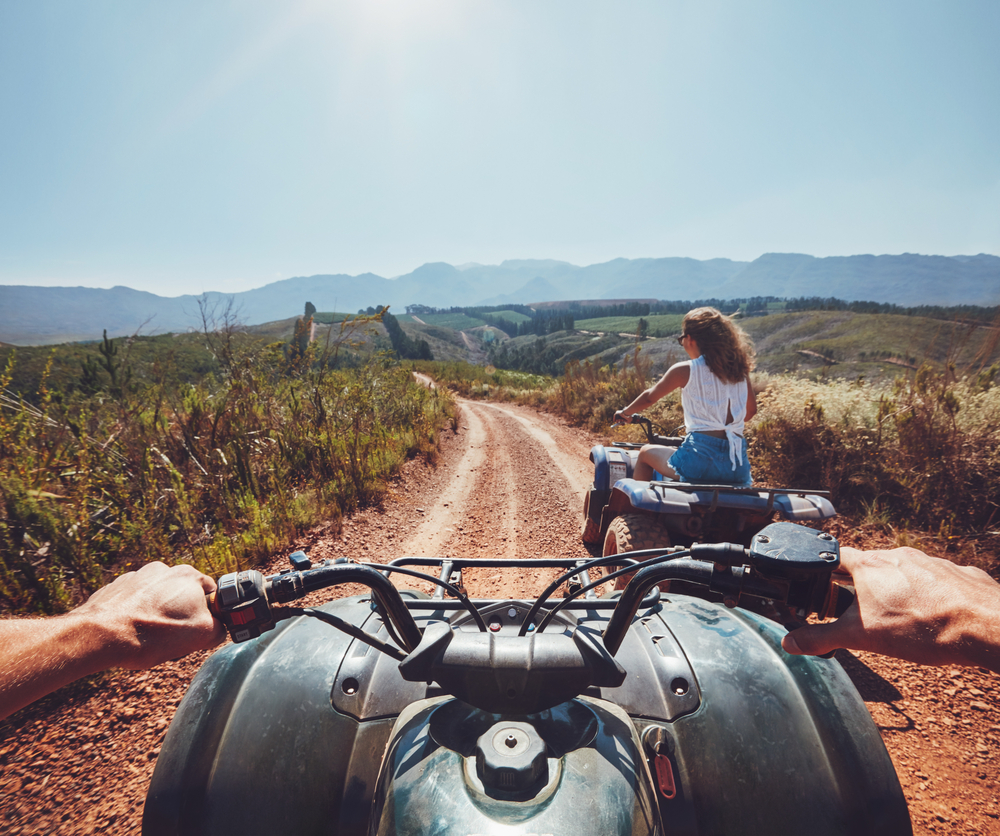
Torso Injuries
When an ATV comes to an abrupt halt during a collision, the rider's chest can be thrown into the handlebars. This could lead to painful bruising at best, or broken ribs at worst. A rider's back also risks injury if the quad tips or flips over, or ejects the rider off, which in a worst-case scenario can damage the spinal column and lead to paralysis. An injury to the torso can also damage internal organs, which leads to a whole new set of complications.
Minor Injuries
Aches and pains after a day of quad riding is an indication that you've suffered minor injuries. Pulled muscles, stiff back, bruises, scrapes and abrasions aren't as serious as the other injuries we've mentioned, but they can still make life miserable. Anyone who's ever burned a leg on a hot exhaust pipe also knows a little something about ATV riding pain.

Common Causes of ATV Injuries
Ejection From an ATV
When an ATV is involved in an accident, the rider will likely be thrown from the machine. A rider can also be ejected from a quad while trying to negotiate a steep incline, tight turn or any other maneuver that causes it to roll or flip over. Injuries to the head, neck and limbs are likely if a rider is thrown from an ATV.
Trapped by an ATV
Quads are notorious for flipping over when performing tricky turns or climbing steep inclines, especially if the rider applies too much throttle. When this happens, the ATV often rolls backward and traps the rider underneath it. The weight of an ATV will easily break bones or injure the ribs, spine and internal organs of a rider trapped beneath it.
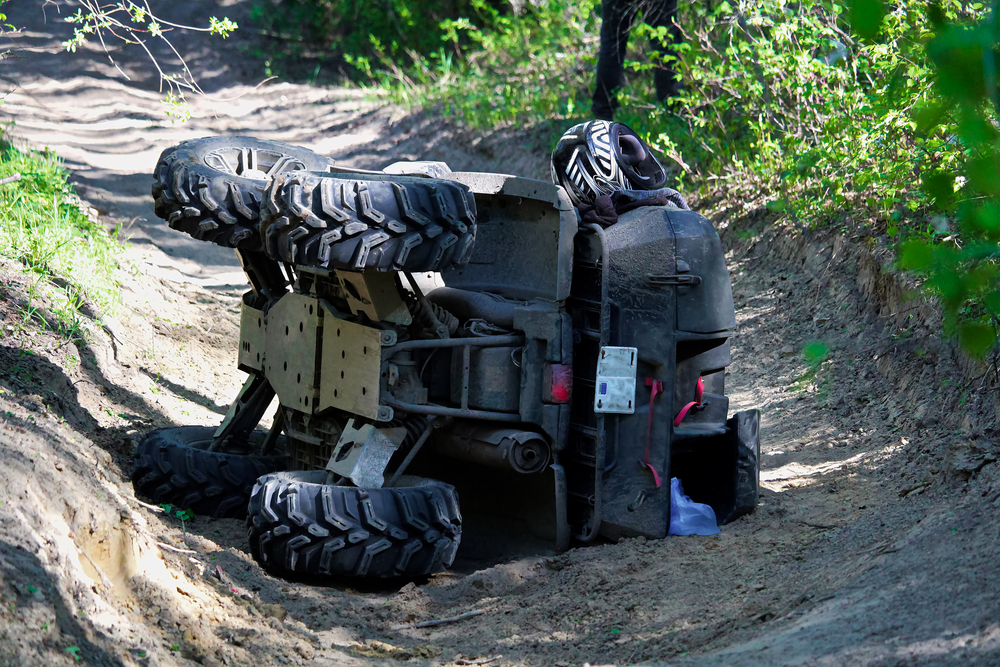
Collision on an ATV
When an ATV hits an unseen object such as a tree stump or boulder, the rider's chest could be thrown hard against the handlebars, and his or her neck could get whiplashed when the machine comes to an abrupt halt. Chest and internal organ injuries are likely if a rider's torso is thrown against the handlebars.
Mechanical Failure of an ATV
If a part or component on an ATV breaks, it may cause the quad to become uncontrollable and crash. This can lead to the rider being ejected from or trapped under the ATV, or colliding with something and causing any of the injuries mentioned above.
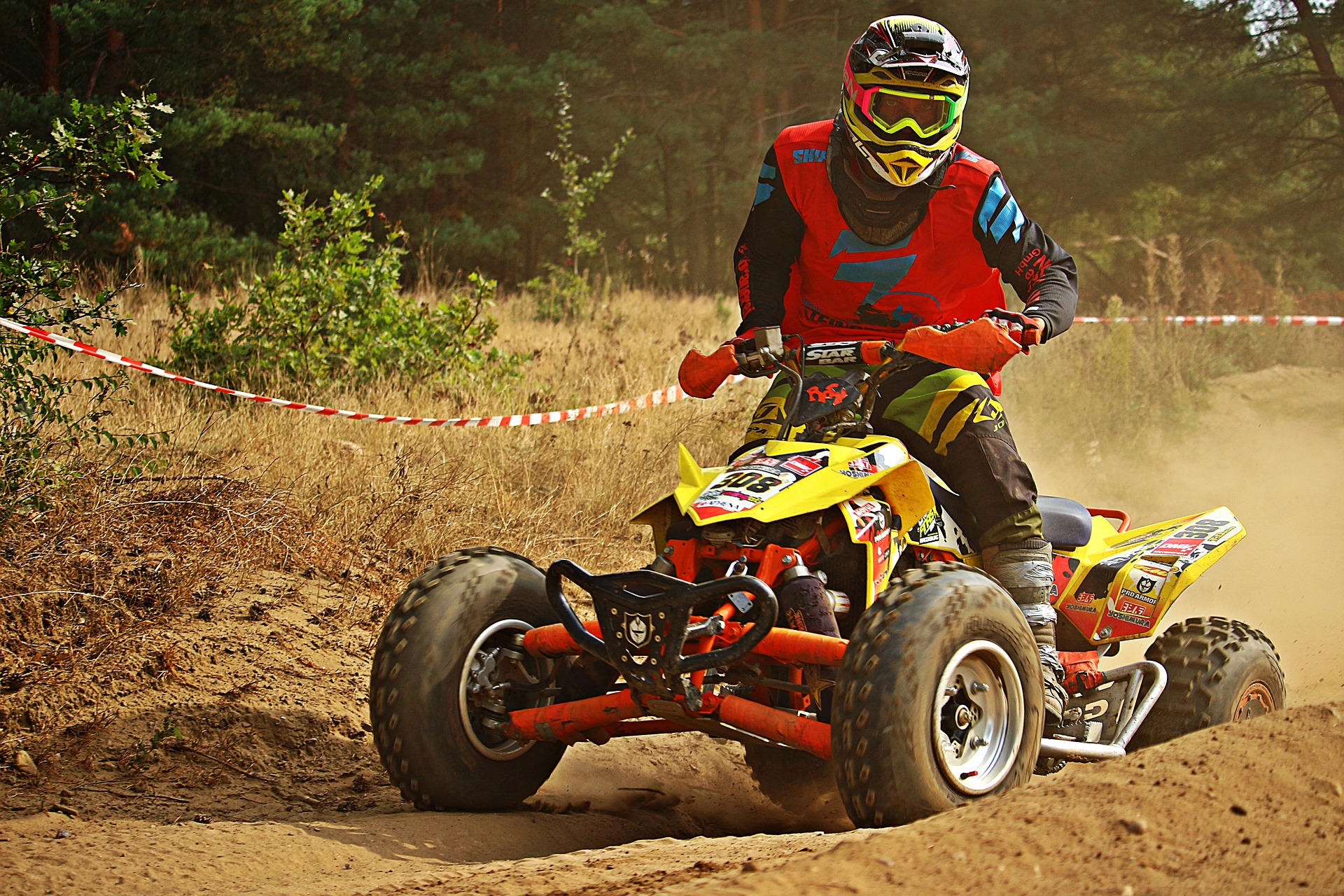
Always wear a full set of protective riding gear to prevent ATV injuries. Wearing brightly colored, reflective gear will help make you more visible to other riders, thus reducing the chance of a collision.
The riding gear you should wear includes all of the following:
- Helmet
- Goggles
- Gloves
- Chest and back protector
- Boots
- Knee/elbow pads
Additional Preparation and Safety
Carry a small toolkit and a fully charged phone with you. That way, if your quad breaks down miles from nowhere, a toolkit could help get it moving again, and a phone will let you call for help if necessary. Let others know where you'll be riding, and for how long you intend to be out there.
Take an ATV rider safety and training class. In many states, it's mandatory for quad owners to complete a rider training course. However, even if your state doesn't require it, it doesn't hurt to take some safety training courses to better prepare for what may lie ahead.
What to Do While Riding your ATV
Riding beyond your skill level or tackling terrain you're not confident with are recipes for disaster. Be particularly careful when facing steep slopes and making sharp turns.

Know your ATV's capabilities, and don't try to tackle steep inclines or jump large obstacles if you're not sure your quad can handle it. Always be on the lookout for potential hazards, and only ride on designated trails to reduce the possibility of getting lost, or hitting unseen obstacles on uncharted territory. Avoid paved roads too, since ATVs are not stable or easy to control on them, and the risk of collisions with other vehicles is much higher.
Careful with Other ATV Riders
ATVs are not designed to seat two people, and become unstable when overloaded. Avoid bringing a passenger along to reduce the chances of injuring yourself and others. However, never take solo riding trips. Use the buddy system and ride with other ATV or UTV drivers (not passengers) in case you need help with a mechanical problem or accident.
Use Common Sense
Because ATVs are far heavier and much less stable than dirt bikes, avoid stunts like wheelies, jumps and any other tricks that can go wrong. And of course, never drink and ride. Not only is it illegal, but drinking impairs your riding abilities and increases the likelihood of an accident.

Never ride while fatigued either, as riding tired is almost as hazardous as riding drunk. Either turn off your ATV and rest up, or pack up and head home.
